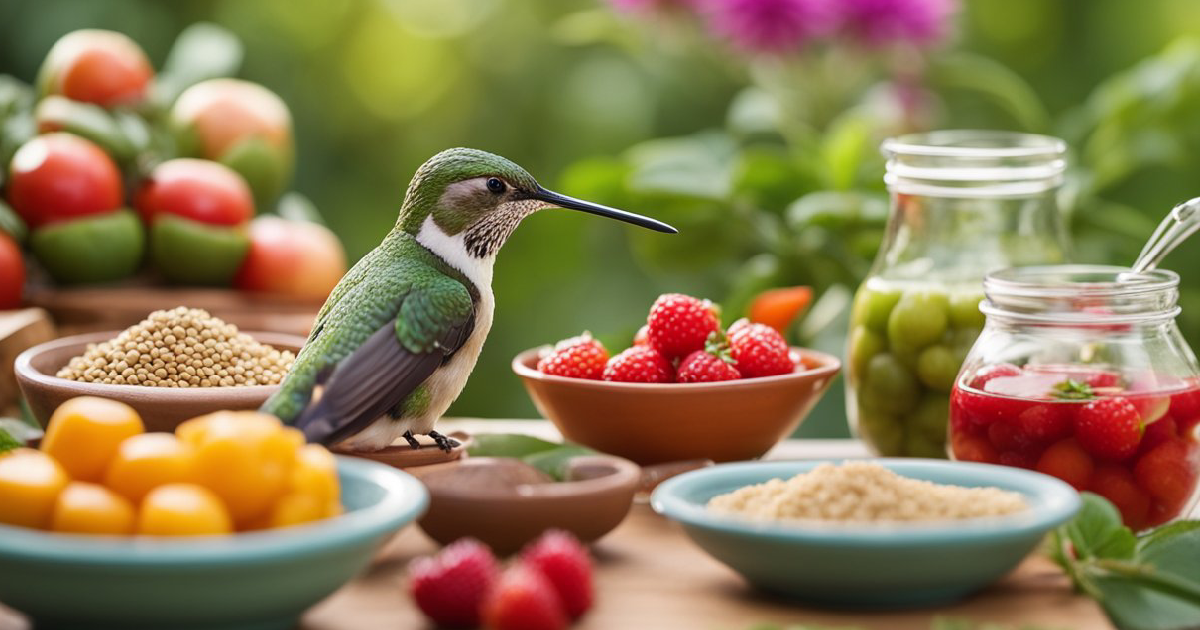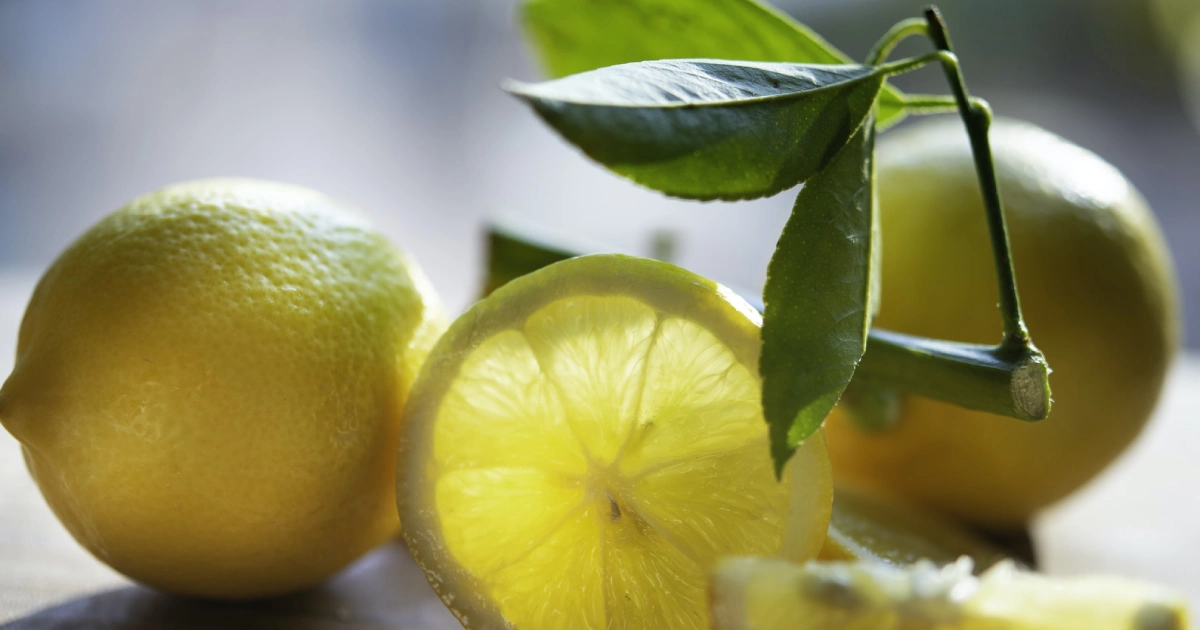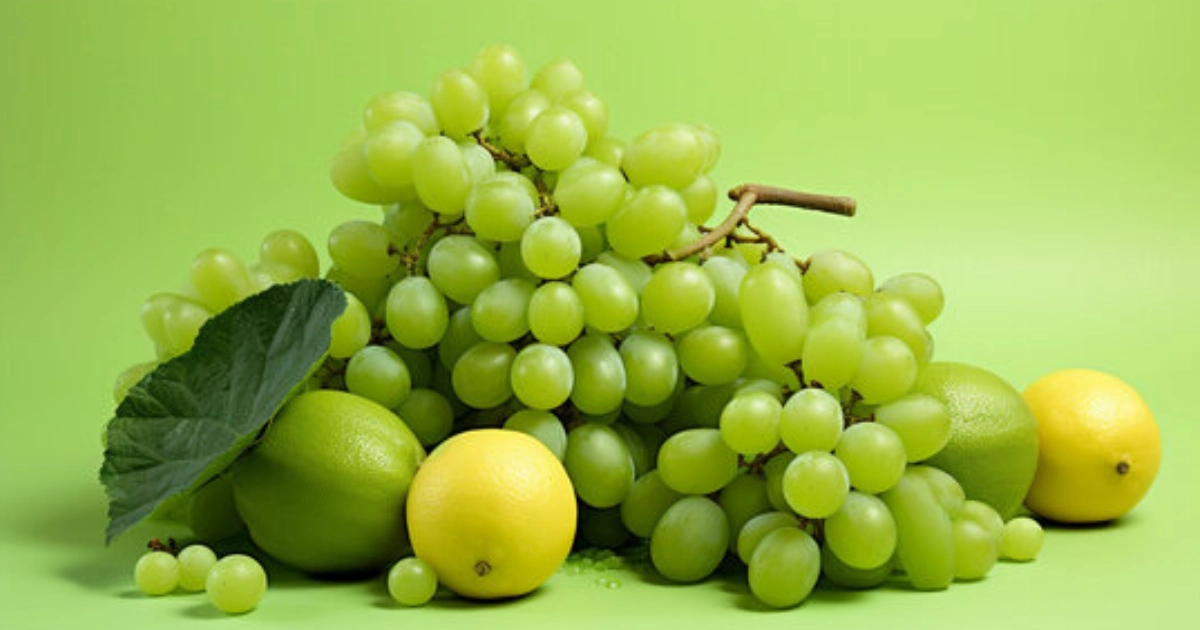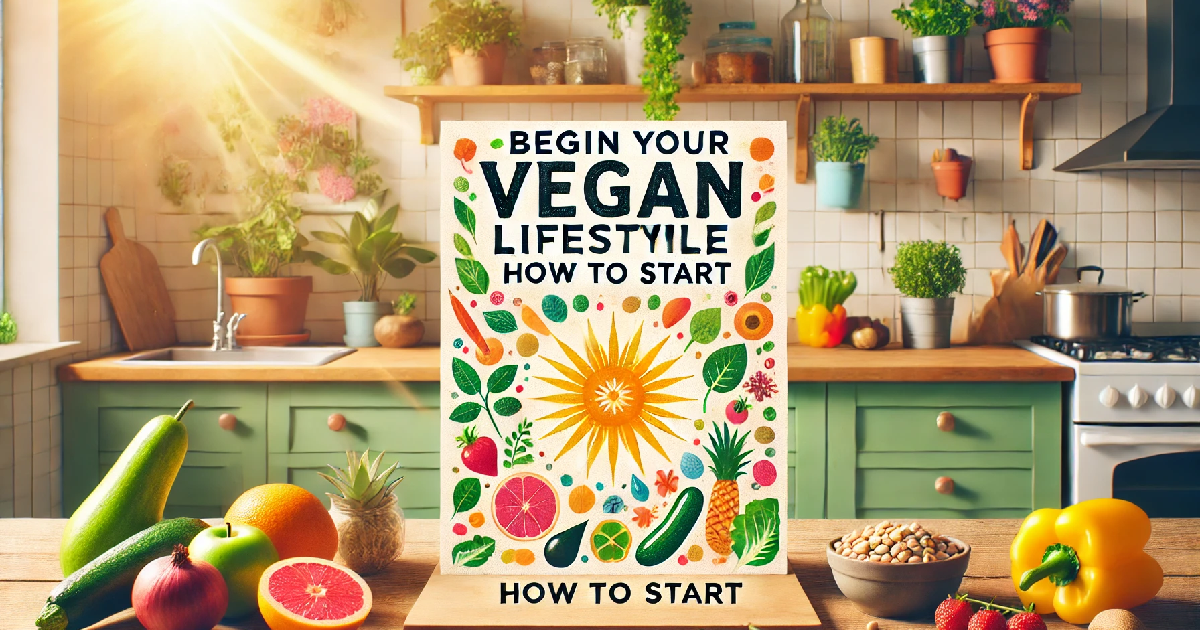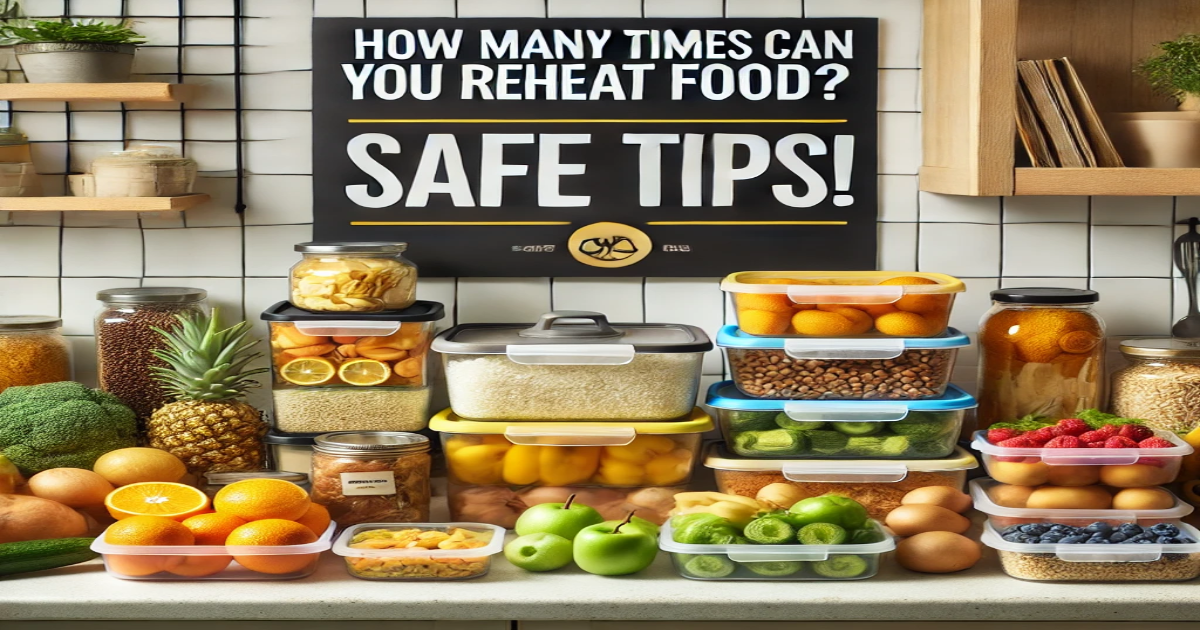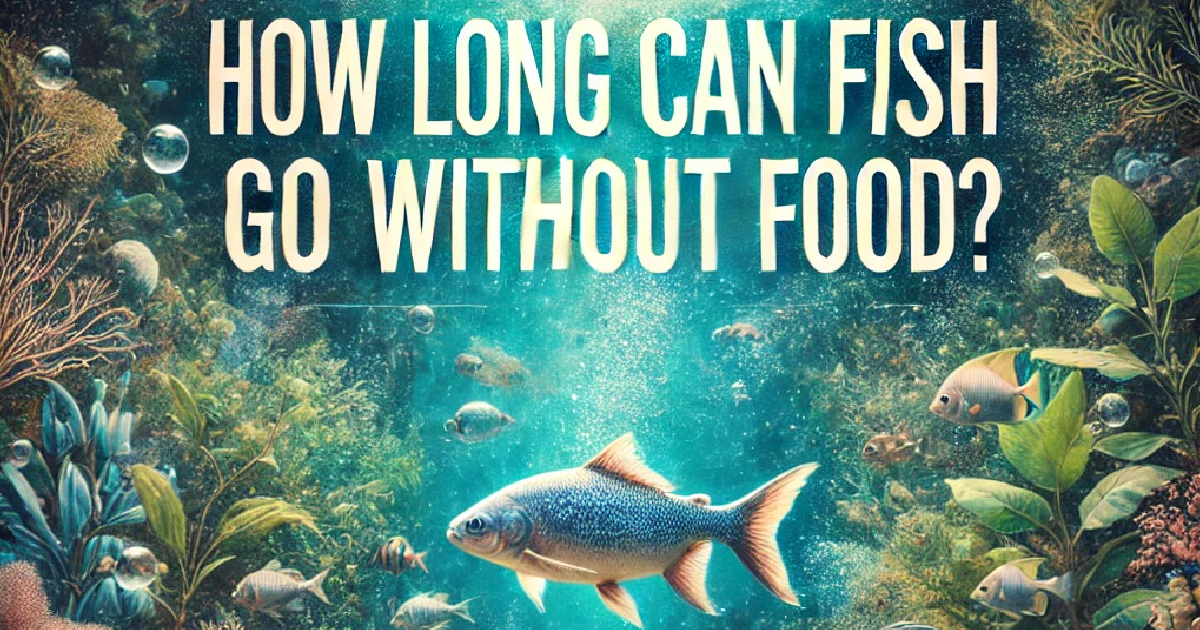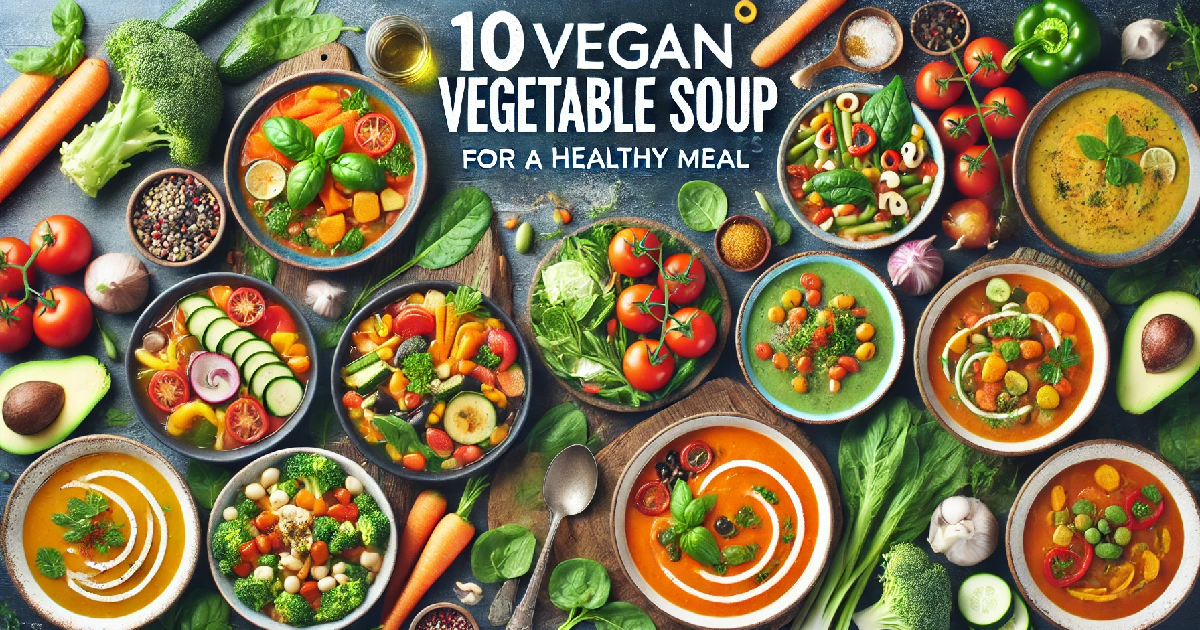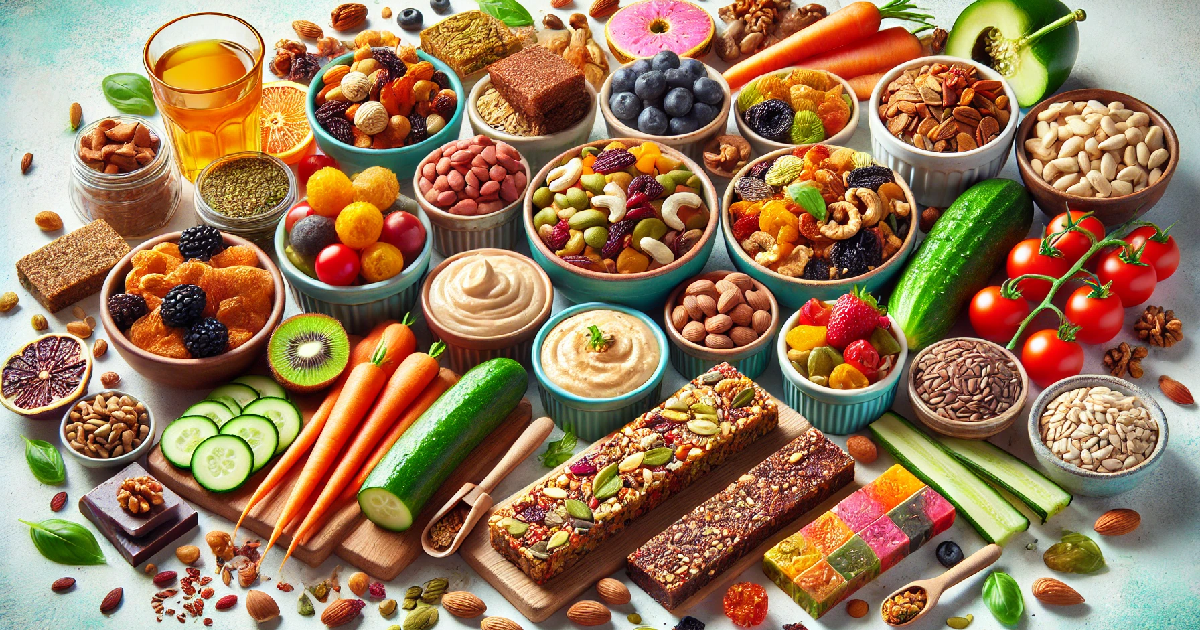Are you intrigued by the idea of veganism but overwhelmed by the thought of making a sudden, drastic change? The path to a vegan lifestyle doesn’t have to be an all-or-nothing leap. Embracing veganism can transform your health, benefit the environment, and champion animal welfare, but it doesn’t need to happen overnight.
In our fast-paced world, change can often feel intimidating. The idea of becoming vegan slowly presents a refreshing alternative. A gradual transition allows your body and mind to adapt seamlessly, making the journey to veganism manageable and enjoyable. This guide will walk you through each step, showing you how to incorporate more plant-based meals into your diet, one bite at a time.
Sustainable changes are those made thoughtfully and deliberately. By gradually transitioning to a vegan diet, you give yourself the space to learn, adapt, and thrive without the stress of an immediate overhaul.
If you’re ready to explore how to become vegan slowly, this guide is for you. We will delve into the benefits of a gradual transition, provide practical tips and strategies, and offer insights into creating a balanced and nutritious vegan lifestyle at your own pace. Let’s embark on this journey together, step by step, to a healthier, more compassionate way of living.
How to Become Vegan Slowly
Transitioning to a vegan diet doesn’t need to be an all-or-nothing endeavor. A slow transition offers numerous benefits, including reduced stress, better adaptability, and long-lasting dietary changes. By slowly adopting veganism, you allow your body to adjust to new foods and ensure you’re meeting nutritional needs.
To adopt a gradual vegan lifestyle, start with small, manageable changes. This step-by-step vegan guide will help you integrate more plant-based foods into your daily routine. Gradual changes provide time to explore various vegan options and recipes.
Understand Your Motivation
Understanding why you want to transition to a vegan diet is crucial. People choose veganism for health benefits, environmental concerns, and ethical considerations regarding animal welfare. Knowing your motivation can help you stay committed and focused during the transition.
Start with Small Changes
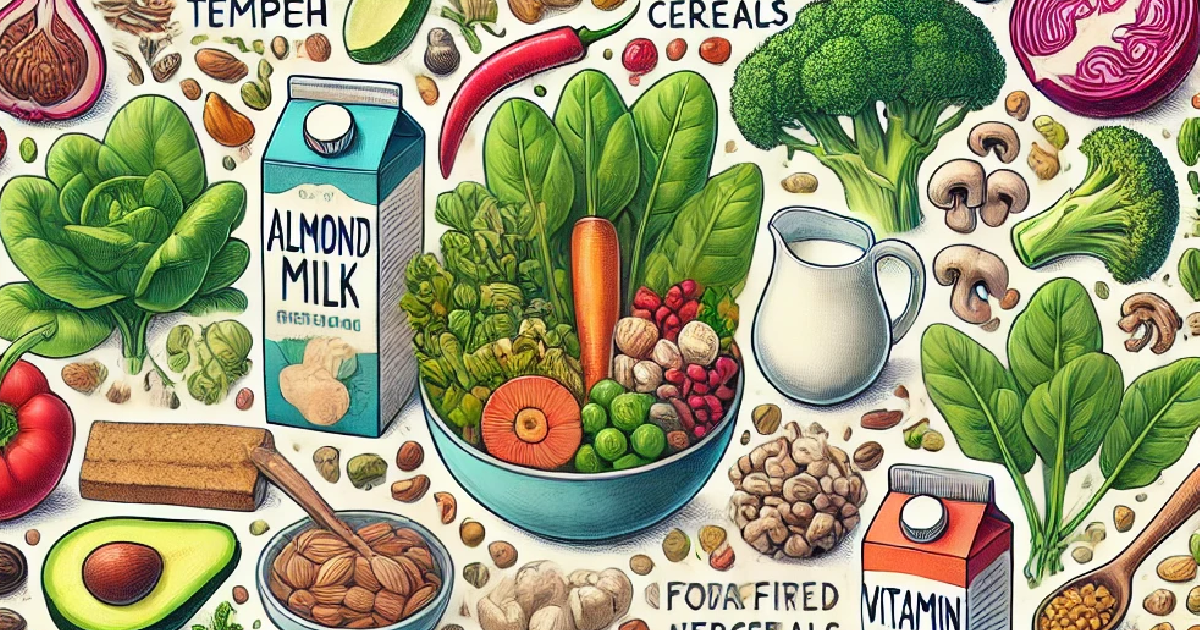
Begin by incorporating more plant-based meals into your diet. Replace one meal a day with a vegan option, such as a hearty salad, vegetable stir-fry, or a smoothie bowl. Gradually eliminate animal products from your diet. Start with dairy or meat and find suitable vegan alternatives—for example, swap cow’s milk for almond or soy milk. Replace meat with plant-based proteins like tofu, tempeh, or legumes.
Educate Yourself
Educating yourself about vegan nutrition is essential for a balanced diet. Learn about essential nutrients such as protein, iron, calcium, vitamin B12, and omega-3 fatty acids. Understanding where to find these nutrients in plant-based foods ensures you maintain a healthy diet during your transition.
Books, documentaries, and online communities provide reliable resources and beginner vegan tips. Joining vegan forums or following vegan influencers on social media can also provide Support and inspiration. Consider consulting a nutritionist to create a personalized vegan diet transition plan.
| Nutrient | Plant-Based Sources |
|---|---|
| Protein | Legumes, tofu, tempeh, quinoa, lentils |
| Iron | Spinach, lentils, chickpeas, fortified cereals |
| Calcium | Almond milk, tofu, broccoli, kale |
| Vitamin B12 | Fortified cereals, nutritional yeast, supplements |
| Omega-3 Fatty Acids | Chia seeds, flaxseeds, walnuts |
How to Start Off Being a Vegan

Starting off being a vegan can feel daunting, but breaking it down into manageable steps makes it achievable. Set realistic goals and expectations to ensure a smooth transition to a vegan diet. By gradually incorporating plant-based foods and phasing out animal products, you can adopt a vegan lifestyle that is both sustainable and enjoyable.
Replace Dairy Products
One of the first steps to go vegan is replacing dairy products with plant-based alternatives. Start by swapping cow’s milk for almond, soy, or oat milk. These alternatives mimic the texture and taste of milk and offer various nutritional benefits.
Cheese lovers can explore options like cashew cheese, nutritional yeast, and vegan cheese brands. Yogurt and butter can also be replaced with coconut or almond-based versions.
Explore Plant-Based Protein Sources
Legumes, tofu, tempeh, and quinoa are excellent sources of protein that can easily replace meat in your meals. Incorporating these foods helps ensure you meet your protein needs without consuming animal products.
Here are some easy recipes to incorporate plant-based proteins:
- Chickpea Salad: Mix chickpeas with veggies, olive oil, and lemon juice.
- Tofu Stir-Fry: Sauté tofu with vegetables and soy sauce.
- Lentil Soup: Cook lentils with vegetables and spices.
Gradual Elimination of Animal Products
Start by identifying animal products in your meals and finding vegan alternatives. Begin with the most frequently consumed items, like meat and dairy, and slowly replace them with plant-based options.
Here’s a step-by-step process for reducing and eliminating animal products:
- Week 1: Replace one meal a day with a vegan option.
- Week 2: Eliminate dairy products and replace them with plant-based alternatives.
- Week 3: Start incorporating more plant-based proteins and reducing meat consumption.
- Week 4: Eliminate meat and find vegan substitutes for animal products like eggs and honey.
Nutritional Comparison Table
| Food Item | Animal-Based Option | Vegan Alternative |
|---|---|---|
| Milk | Cow’s Milk | Almond Milk, Soy Milk |
| Cheese | Cheddar Cheese | Cashew Cheese, Nutritional Yeast |
| Yogurt | Greek Yogurt | Coconut Yogurt, Almond Yogurt |
| Meat | Chicken, Beef | Tofu, Tempeh, Lentils |
| Eggs | Chicken Eggs | Flaxseed Meal, Applesauce |
How Long Does It Take to Become Vegan?
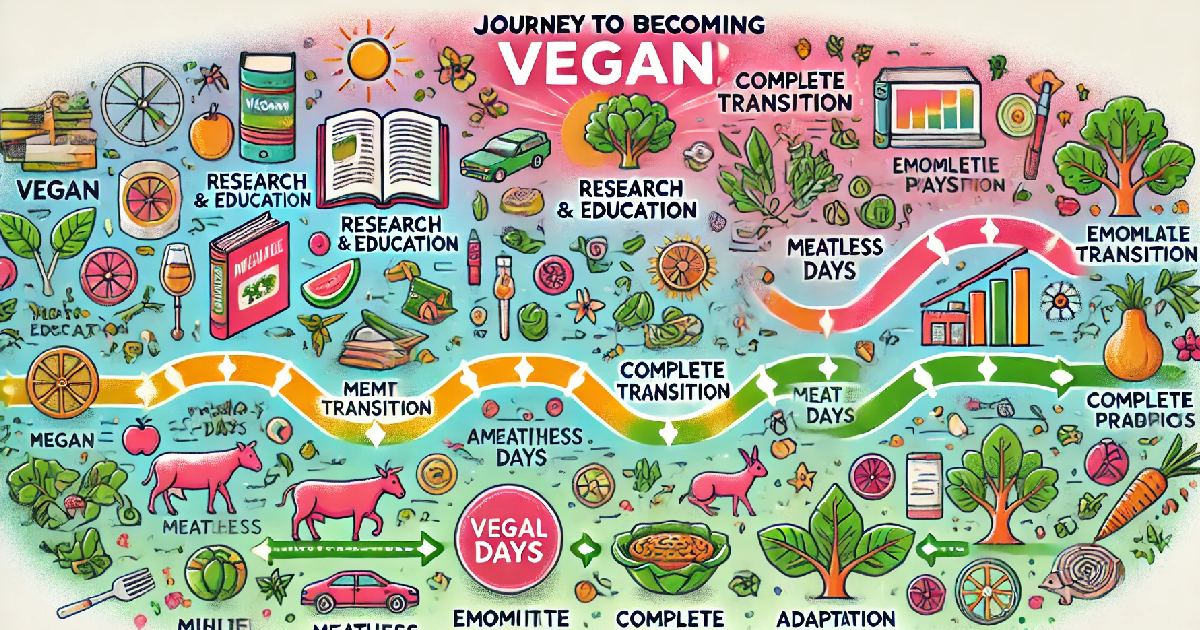
Transitioning to a vegan diet is a personal journey that varies greatly from one individual to another. There is no fixed timeframe for this. Some people may take a few weeks to switch to a plant-based diet, while others might take several months to adopt a vegan lifestyle fully.
Factors such as dietary habits, family dynamics, social environment, and individual health needs significantly determine how quickly one can become vegan. Listening to your body and mind during this process is essential to ensure a smooth transition.
Personalized Transition Plan
Creating a personalized transition plan can help you slowly adopt veganism at your own pace. A tailored approach ensures that the changes you make are sustainable and enjoyable. Start by assessing your eating habits and identifying areas where you can make gradual changes.
Begin by setting realistic goals that align with your lifestyle. For example, aim to replace one animal-based meal with a plant-based option each week. As you become more comfortable, gradually increase the number of vegan meals in your diet.
Here is an example of a transition plan over weeks/months:
Week 1-2: Introduction to Vegan Breakfasts
- Replace your breakfast with plant-based options like smoothies, oatmeal with fruits, or avocado toast.
- Experiment with plant-based milk options such as almond, soy, or oat.
Week 3-4: Incorporate Vegan Lunches
- Start replacing your lunch with vegan alternatives, such as salads with legumes, quinoa bowls, or veggie wraps.
- Explore plant-based proteins like tofu, tempeh, and chickpeas.
Month 2: Vegan Dinners and Snacks
- Gradually replace dinners with vegan dishes, including stir-fries, pasta with vegetables, and hearty soups.
- Introduce vegan snacks like nuts, seeds, and fruit to your diet.
Month 3: Eliminate Dairy and Eggs
- Find alternatives for dairy products, such as vegan cheese, yogurt, and butter.
- Use egg substitutes like flaxseed meal, chia seeds, or commercial egg replacers in your recipes.
Month 4: Fully Vegan Lifestyle
- Focus on eliminating any remaining animal products from your diet.
- Continue exploring new vegan recipes and foods to keep your meals exciting and nutritious.
By following this step-by-step vegan guide, you can gradually adopt a vegan lifestyle without feeling rushed or stressed.
Sample Transition Plan Table
| Week/Month | Goal | Actions/Examples |
|---|---|---|
| Week 1-2 | Vegan Breakfasts | Smoothies, oatmeal, avocado toast |
| Week 3-4 | Vegan Lunches | Salads with legumes, quinoa bowls, veggie wraps |
| Month 2 | Vegan Dinners and Snacks | Stir-fries, pasta with vegetables, hearty soups |
| Month 3 | Eliminate Dairy and Eggs | Vegan cheese, yogurt, egg substitutes |
| Month 4 | Fully Vegan Lifestyle | Eliminate remaining animal products |
How to Go 100% Vegan

Fully committing to a vegan lifestyle requires a deliberate and thoughtful approach. It involves steps to eliminate all animal products from your diet and daily life. Consistency and dedication are crucial to successfully transitioning to a vegan diet and maintaining it long-term.
To start: Make a list of all the animal products you currently consume and use. Identify vegan alternatives for each item. Gradually replace these products with plant-based options until you have fully transitioned to a vegan lifestyle.
Meal Planning and Preparation
Planning balanced vegan meals is essential for a successful vegan diet transition.
Start by creating weekly meal plans that include a variety of fruits, vegetables, grains, legumes, and nuts. This ensures you get all the necessary nutrients and keeps your meals interesting.
Meal prepping can make the transition easier. Set aside time each week to prepare meals in advance.
Cook large batches of staples like rice, beans, and roasted vegetables. Store them in portioned containers for quick and easy meals throughout the week.
To ensure balanced meals, include: A source of protein. A variety of colorful vegetables. Healthy fats in each meal. For example, a balanced meal could include quinoa, chickpeas, roasted vegetables, and avocado.
Dining Out and Social Situations
Navigating restaurant menus and social gatherings as a new vegan can be challenging. Before dining out: Check the restaurant’s menu online. Look for vegan options or dishes that can be easily modified. Communicate your dietary preferences clearly to the restaurant staff. Most places are willing to accommodate dietary restrictions. Ask about ingredients and request modifications if needed.
Social situations may also require some planning. Inform your host about your dietary preferences ahead of time. Offer to bring a vegan dish to share.
Overcoming Cravings and Temptations
Managing cravings for non-vegan foods is a common challenge. First, identify the triggers for your cravings. Is it a specific time of day, a particular activity, or a certain emotional state? Understanding your triggers can help you develop strategies to address them.
Vegan alternatives can satisfy common cravings. For example, if you crave cheese, try nutritional yeast or vegan cheese made from nuts. If you miss the taste of meat, explore plant-based meat substitutes like Beyond Meat or tempeh. Keeping healthy vegan snacks on hand can also help manage cravings. Nuts, seeds, fruits, and hummus are great options.
Sample Balanced Vegan Meal Plan
| Meal | Example Dish | Key Nutrients |
|---|---|---|
| Breakfast | Smoothie with spinach, banana, chia seeds, and almond milk | Protein, fiber, omega-3 fatty acids, vitamins A and C |
| Lunch | Quinoa salad with chickpeas, cucumber, tomatoes, and tahini dressing | Protein, fiber, healthy fats, vitamins C and K |
| Dinner | Stir-fry with tofu, broccoli, bell peppers, and brown rice | Protein, fiber, vitamins A and C, iron |
| Snack | Apple slices with almond butter | Healthy fats, protein, fiber, vitamins A and E |
Is Being Vegan Healthy? Benefits and Considerations
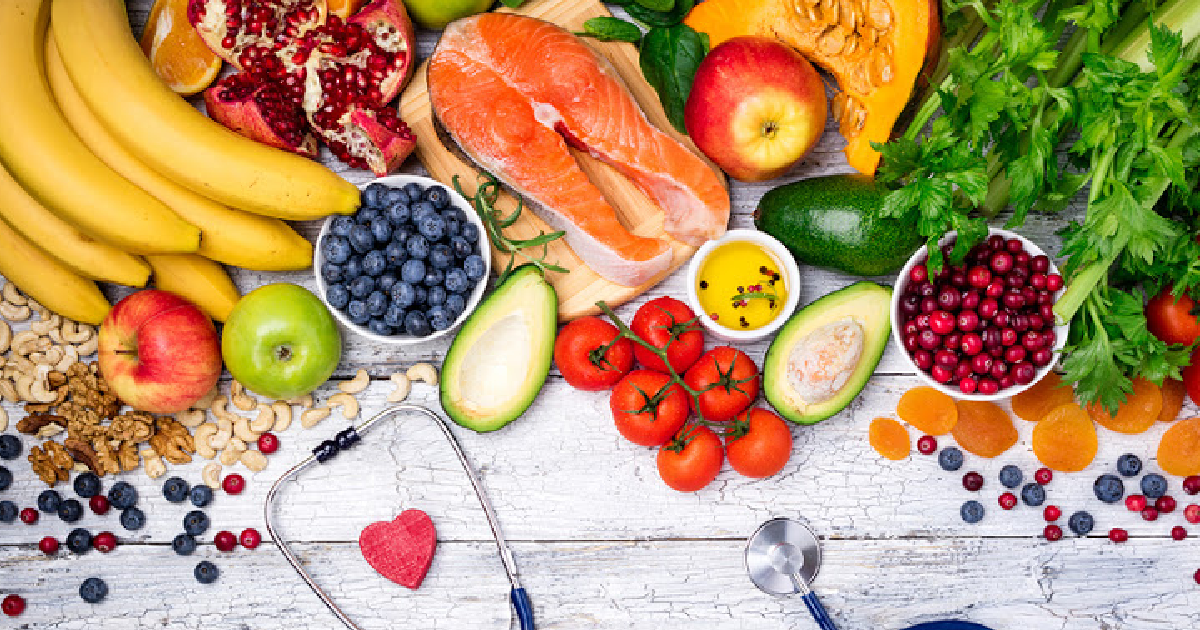
When planned properly, a vegan diet can offer numerous health benefits. One of the primary benefits of transitioning to a vegan diet is improved heart health. Plant-based diets are generally lower in saturated fats and cholesterol, which can help reduce the risk of heart disease. Additionally, vegans tend to have lower blood pressure and body mass index, contributing to overall cardiovascular health.
Another significant benefit of a vegan lifestyle change is better digestion. A vegan diet is typically fiber-rich due to abundant fruits, vegetables, whole grains, and legumes. This high fiber intake aids in maintaining a healthy digestive system and can help prevent constipation and other digestive issues.
Despite these benefits, addressing common concerns about vegan nutrition is essential. Critics often argue that a vegan diet may lack certain nutrients. However, these concerns can be managed effectively with careful planning and a varied diet.
Essential Nutrients for Vegans
Vegans must consider certain vital nutrients to maintain a balanced and nutritious diet. Vitamin B12 is crucial as it is primarily found in animal products. Vegans can obtain B12 from fortified foods or supplements to prevent deficiency. Iron is another important nutrient that can be sourced from plant-based foods like spinach, lentils, and chickpeas. Consuming vitamin C-rich foods alongside iron sources enhances absorption.
Omega-3 fatty acids are essential for brain health and can be found in flaxseeds, chia seeds, and walnuts. Protein is another concern, but plenty of plant-based sources are available. Legumes, tofu, tempeh, quinoa, and nuts provide ample protein.
Here’s a table summarizing these essential nutrients and their sources:
| Nutrient | Sources |
|---|---|
| Vitamin B12 | Fortified cereals, nutritional yeast, supplements |
| Iron | Spinach, lentils, chickpeas, fortified cereals |
| Omega-3 | Flaxseeds, chia seeds, walnuts |
| Protein | Legumes, tofu, tempeh, quinoa, nuts |
Potential Side Effects and How to Manage Them
Transitioning to a vegan diet can sometimes lead to side effects as the body adjusts to new eating habits. One common side effect is digestive changes, such as increased gas or bloating, due to higher fiber intake. Gradually increasing fiber intake and drinking plenty of water can help manage these symptoms.
Another potential issue is a temporary decrease in energy levels. This can occur if the body is not yet accustomed to the new diet or if calorie intake needs to be increased. Ensuring adequate calorie consumption and eating balanced meals with proteins, healthy fats, and complex carbohydrates can mitigate this problem.
Some individuals may experience cravings for non-vegan foods during the initial transition period. Identifying and understanding these cravings can help in finding satisfying vegan alternatives.
Here are some tips to minimize and manage these side effects:
- Increase Fiber Gradually: Start with smaller portions of high-fiber foods and gradually increase intake.
- Stay Hydrated: Drink plenty of water to help digestion.
- Monitor Calorie Intake: Ensure you consume enough calories to meet your energy needs.
- Find Satisfying Alternatives: Use vegan substitutes for common cravings, such as plant-based cheeses and meats.
How to Become Vegan Slowly for Beginners
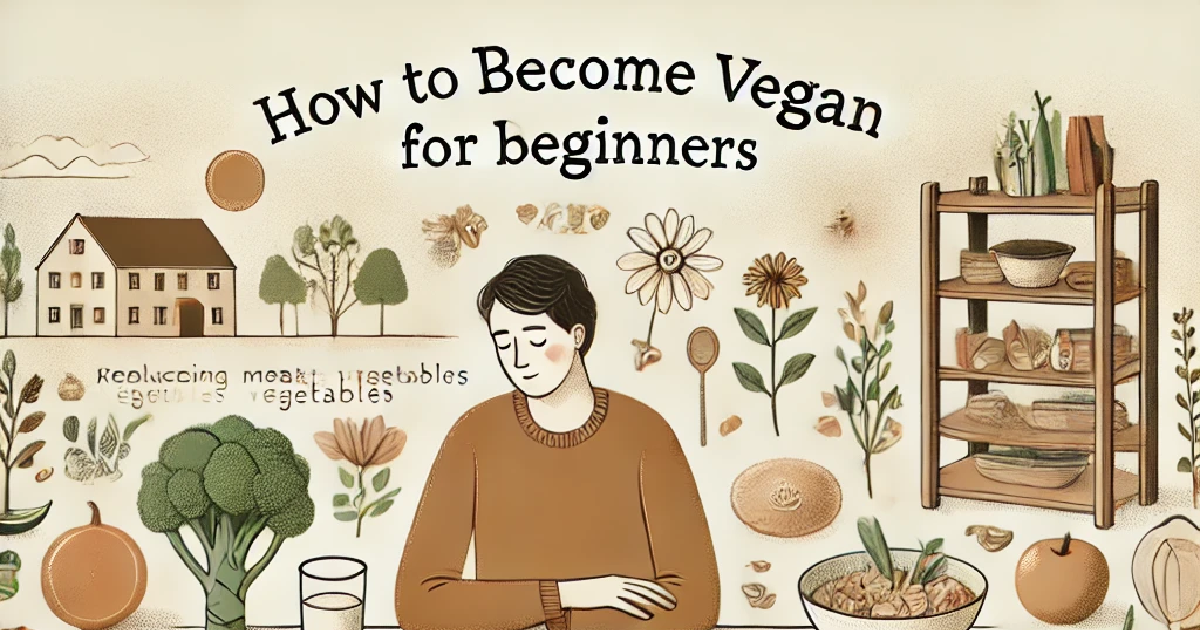
Transitioning to a vegan diet can seem overwhelming, especially for beginners. Tailored advice and simple, practical steps can ease the process and help you adopt a gradual vegan lifestyle. By taking it one step at a time, you can make lasting changes without feeling overwhelmed.
Starting with small, manageable changes allows your body and mind to adjust. Slowly adopting veganism involves incorporating more plant-based meals into your diet and gradually phasing out animal products.
Beginner’s Guide to Veganism
Understanding vegan essentials is the first step in your journey. Begin by familiarizing yourself with staple vegan foods such as fruits, vegetables, grains, legumes, nuts, and seeds. These form the foundation of a balanced vegan diet and provide essential nutrients.
Next, stock your kitchen with these essentials. Having a variety of plant-based ingredients on hand makes it easier to prepare vegan meals. Look for quinoa, lentils, chickpeas, tofu, and almond milk. Explore spices and herbs to enhance the flavor of your dishes.
Joining resources and communities for beginner support is incredibly helpful. Online forums, social media groups, and local vegan meetups can provide guidance and inspiration. Engaging with these communities allows you to share experiences, ask questions, and find Support from others who are on the same journey.
Sample Vegan Starter Kit
| Category | Examples |
|---|---|
| Grains | Quinoa, brown rice, whole wheat pasta |
| Legumes | Chickpeas, lentils, black beans |
| Vegetables | Spinach, kale, bell peppers, carrots |
| Fruits | Apples, bananas, berries, oranges |
| Nuts and Seeds | Almonds, chia seeds, flaxseeds, walnuts |
| Plant-based Proteins | Tofu, tempeh, seitan, edamame |
| Dairy Alternatives | Almond milk, soy yogurt, cashew cheese |
| Spices and Herbs | Turmeric, cumin, basil, oregano |
How to Become Vegan to Lose Weight
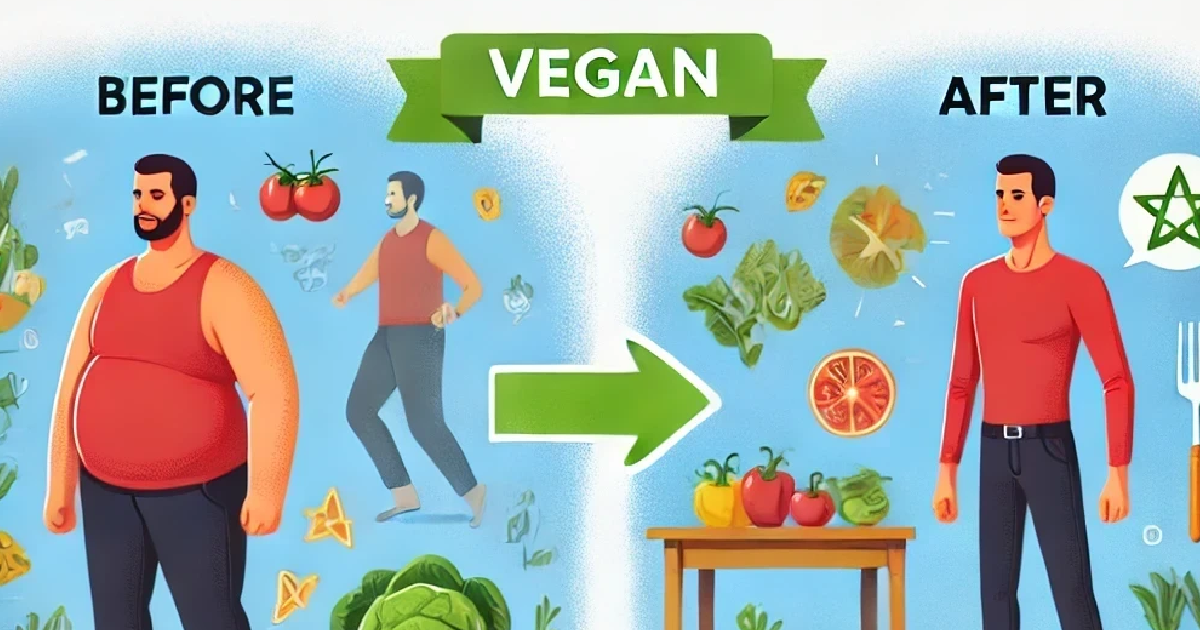
Adopting a vegan diet can be an effective way to lose weight. The benefits of a vegan diet for weight loss are numerous. Plant-based diets are generally lower in calories and saturated fats than those that include animal products. Additionally, they are high in fiber, which helps you feel full and satisfied, reducing overall calorie intake.
A vegan diet can also improve metabolism and promote fat loss. The emphasis on whole, unprocessed foods such as fruits, vegetables, grains, and legumes provides essential nutrients while supporting a healthy weight.
Vegan Weight Loss Meal Plans
Creating a vegan weight loss meal plan involves focusing on nutrient-dense foods that support weight loss while providing essential nutrients. Here is a sample meal plan to guide you:
Breakfast: Smoothie Bowl
- Blend spinach, frozen berries, a banana, and almond milk.
- Top with chia seeds, sliced almonds, and fresh fruit.
Lunch: Quinoa Salad
- Combine cooked quinoa, chickpeas, cherry tomatoes, cucumber, and avocado.
- Dress with lemon juice, olive oil, and fresh herbs.
Dinner: Stir-Fried Vegetables with Tofu
- Sauté tofu, broccoli, bell peppers, and snap peas in a soy-ginger sauce.
- Serve over brown rice or cauliflower rice.
Snacks:
- Apple slices with almond butter.
- Carrot sticks with hummus.
Portion control and balanced nutrition are essential for effective weight loss. Ensure each meal includes protein, carbohydrates, and healthy fats. This helps maintain energy levels and supports metabolic functions.
Physical Activity and Veganism
Physical activity plays a crucial role in a vegan weight loss plan. Combining exercise with a vegan diet can enhance weight loss and overall health. Regular physical activity helps burn calories, build muscle, and boost metabolism.
Examples of vegan-friendly workouts and routines include:
- Cardio Workouts: Running, cycling, and swimming are excellent for burning calories.
- Strength Training: Incorporate weight lifting or bodyweight exercises like push-ups and squats to build muscle.
- Flexibility and Balance: Yoga and Pilates can improve flexibility and core strength.
Here is a sample weekly workout routine:
| Day | Activity |
|---|---|
| Monday | 30 minutes of running |
| Tuesday | Strength training (full body) |
| Wednesday | Yoga session |
| Thursday | 30 minutes of cycling |
| Friday | Strength training (upper body) |
| Saturday | 30 minutes of swimming |
| Sunday | Rest or light activity like walking |
Transition to Vegan in 30 Days
Transitioning to a vegan diet in 30 days is achievable with a structured plan. This step-by-step vegan guide breaks the process into manageable daily and weekly goals. Setting milestones helps you gradually adopt vegan habits and maintain a balanced diet.
A phased approach to veganism ensures that your body and mind can adjust comfortably. You can build a sustainable vegan lifestyle by making small, consistent changes each week.
Week 1: Introduction to Vegan Meals
Start your vegan journey by focusing on breakfast and snacks. Replace your usual breakfast with delicious vegan options. Smoothies, oatmeal with fruits, and avocado toast are excellent choices.
Opt for nuts, seeds, fruits, and hummus with veggie sticks for snacks. These provide essential nutrients and keep you full between meals. Try simple recipes like a green smoothie with spinach, banana, and almond milk or overnight oats with chia seeds and berries.
Week 2: Expanding to Lunch and Dinner
In week two, start incorporating plant-based proteins into your lunch and dinner. Legumes, tofu, tempeh, and quinoa are excellent sources of protein. Begin by making simple, balanced meals that include these ingredients.
For lunch, try a quinoa salad with chickpeas, tomatoes, cucumber, and avocado. For dinner, prepare a tofu stir-fry with broccoli, bell peppers, and brown rice.
Week 3: Eliminating Dairy and Eggs
In week three, work on eliminating dairy and eggs from your diet. Find plant-based alternatives for these products. Almond milk, soy yogurt, and cashew cheese are excellent substitutes.
Explore recipes that use these alternatives to make the switch enjoyable. Try vegan cheese on pizza, almond milk in smoothies, and flaxseed meal as an egg replacer in baking.
Week 4: Fully Vegan Lifestyle
In the final week, focus on completing your transition to a fully vegan lifestyle. Ensure all your meals and snacks are plant-based. Continue exploring new recipes and foods to keep your diet varied and exciting.
Maintaining a vegan lifestyle long-term involves planning and preparation. Keep your pantry stocked with vegan essentials, and stay informed about new products and recipes. Engage with vegan communities for Support and inspiration.
Here are some tips for sustaining a vegan lifestyle:
- Plan Your Meals: Create weekly meal plans to ensure balanced nutrition.
- Stay Informed: Keep learning about vegan nutrition and new recipes.
- Find Support: Join vegan groups and forums for motivation and advice.
Sample 30-Day Vegan Transition Plan
| Week | Focus | Actions/Examples |
|---|---|---|
| Week 1 | Breakfast and Snacks | Smoothies, oatmeal, avocado toast, nuts, fruits |
| Week 2 | Lunch and Dinner | Quinoa salad, tofu stir-fry, balanced meals |
| Week 3 | Eliminate Dairy and Eggs | Almond milk, vegan cheese, flaxseed meal |
| Week 4 | Fully Vegan Lifestyle | All meals plant-based, meal planning, support |
Switching to Plant-Based Diet Side Effects
Transitioning to a vegan diet can have several side effects, especially as your body adapts to new foods. Understanding these common side effects and how to address them can ensure a smooth transition.
Common side effects when switching to a plant-based diet include digestive changes and fluctuations in energy levels and mood.
Digestive Changes
Digestive changes are among the most common side effects when transitioning to a vegan diet. As you slowly adopt veganism, your fiber intake increases due to the higher consumption of fruits, vegetables, grains, and legumes. This can lead to bloating, gas, and changes in bowel movements.
Managing digestive discomfort involves a few simple steps: gradually increase your fiber intake, drink plenty of water to aid digestion, and include various fiber sources, such as leafy greens, whole grains, and legumes.
Probiotics can be beneficial during this transition. Foods like sauerkraut, kimchi, and plant-based yogurt contain beneficial bacteria that support gut health.
Energy Levels and Mood
Switching to a plant-based diet can also impact your energy levels and mood. Initially, you might experience a temporary decrease in energy as your body adapts to new sources of nutrients. This is particularly common if your previous diet included many animal-based proteins and fats.
To stay energized and positive during the transition, ensure you consume adequate calories and balanced meals. Include a mix of complex carbohydrates, plant-based proteins, and healthy fats in each meal. For example, a quinoa and chickpea salad with avocado provides sustained energy and essential nutrients.
B vitamins, particularly B12, are crucial in energy production and mood regulation. Since B12 is primarily found in animal products, vegans should consider fortified foods or supplements to meet their needs.
Regular physical activity can also boost energy levels and improve mood. Engage in exercises that you enjoy, such as walking, yoga, or cycling.
Sample Meal Plan for Sustained Energy
| Meal | Example Dish | Key Nutrients |
|---|---|---|
| Breakfast | Smoothie with spinach, banana, chia seeds, and almond milk | Protein, fiber, omega-3 fatty acids, vitamins A and C |
| Lunch | Quinoa salad with chickpeas, cucumber, tomatoes, and avocado | Protein, fiber, healthy fats, vitamins C and K |
| Dinner | Stir-fry with tofu, broccoli, bell peppers, and brown rice | Protein, fiber, vitamins A and C, iron |
| Snack | Apple slices with almond butter | Healthy fats, protein, fiber, vitamins A and E |
5 Reasons to Go Vegan
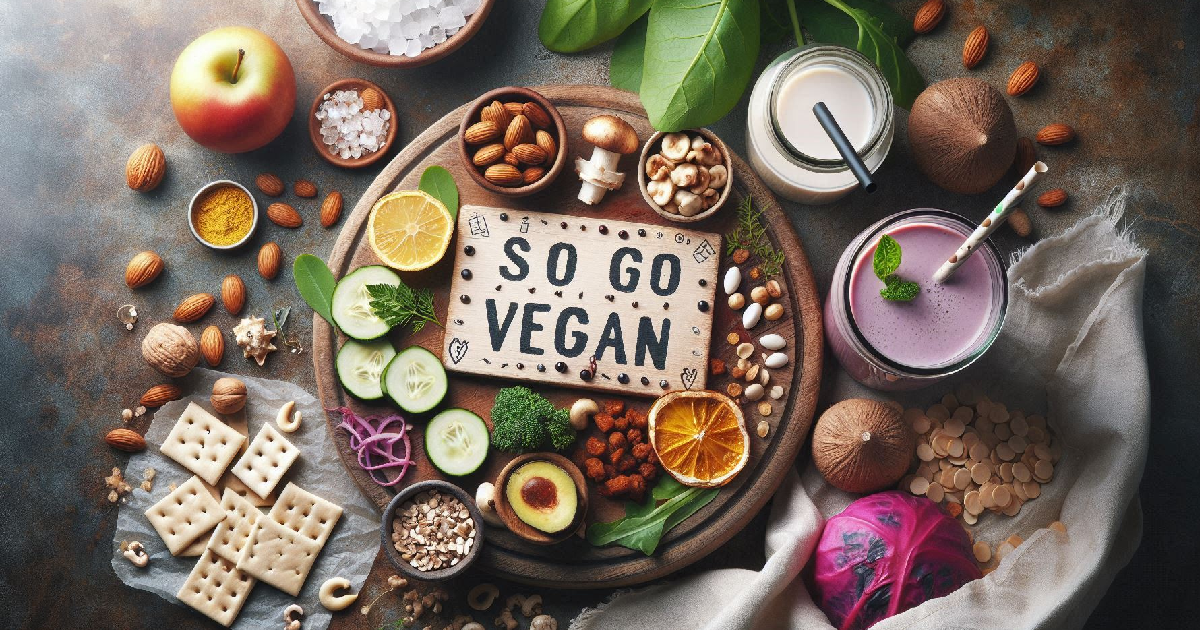
Transitioning to a vegan diet offers numerous benefits, from environmental and ethical to health and personal growth.
Environmental Impact
Veganism significantly reduces one’s environmental footprint. The production of animal products requires vast amounts of resources, including water, land, and feed. By eliminating or reducing animal products from one’s diet, one can help conserve these valuable resources.
Producing one pound of beef requires approximately 1,800 gallons of water. In contrast, making the same amount of plant-based protein requires far less water. Additionally, the livestock industry is a major contributor to greenhouse gas emissions.
Statistics show that if everyone adopted a plant-based diet, global agricultural land use could be reduced by 75%.
Ethical Considerations
One of the primary ethical reasons for going vegan is animal welfare. The industrial farming system often subjects animals to inhumane conditions. By adopting a vegan diet, you take a stand against animal cruelty and exploitation.
Veganism promotes a lifestyle that respects the lives and rights of animals. It emphasizes compassion and non-violence, aligning dietary choices with ethical values.
Health Benefits
A vegan diet offers numerous health improvements. Studies have shown that plant-based diets can reduce the risk of chronic diseases such as heart disease, diabetes, and certain cancers. These diets are typically lower in saturated fats and higher in fiber.
Research supports the benefits of a vegan diet for weight management. A study published in the Journal of General Internal Medicine found that individuals following a vegan diet lost more weight than those on other diets.
Personal Growth and Awareness
Adopting a vegan lifestyle can lead to significant personal growth. It encourages mindfulness about food choices and their impact on health, the environment, and animal welfare. This increased awareness can foster a deeper connection to your values and beliefs.
Personal growth through veganism also involves learning new cooking skills and exploring diverse cuisines. Experimenting with plant-based recipes can be a creative and enjoyable experience.
Community and Support
Being part of the vegan community offers numerous benefits. It provides a sense of belonging and shared purpose with like-minded individuals. Engaging with fellow vegans can offer Support, inspiration, and motivation on your vegan journey.
There are many resources and communities available for beginner vegan tips and advice. Online forums, social media groups, and local vegan meetups are great places to connect with others.
Overview Table: 5 Reasons to Go Vegan
| Reason | Key Benefits |
|---|---|
| Environmental Impact | Reduces resource use, lowers greenhouse gas emissions |
| Ethical Considerations | Promotes animal welfare, aligns with compassionate values |
| Health Benefits | Reduces risk of chronic diseases, aids weight management |
| Personal Growth | Encourages mindfulness |
Conclusion
Transitioning to a vegan diet is best approached with patience and mindfulness. A slow and steady shift allows your body and mind to adapt, making the changes more sustainable in the long run. The gradual vegan lifestyle minimizes potential side effects and ensures that you enjoy the process of discovering new foods and recipes along the way.
Remember, every small step towards a vegan diet is a positive change. Whether replacing one meal a day with a plant-based option or exploring vegan alternatives to your favorite dishes, each effort contributes to a healthier you and a healthier planet. Embrace the journey, knowing that your choices matter and make a difference.
Consider this: transitioning to veganism is not just about changing what you eat; it’s about transforming your thoughts about food, health, and the world around you. It’s an opportunity to align your actions with your values, fostering a deeper connection to your body and the environment.
As you progress on this path, remember that perfection is not the goal—progress is. Celebrate your victories, learn from your challenges, and know that your journey is uniquely yours. Each mindful choice brings you closer to a compassionate and conscious way of living. Reflect on how these changes impact your life and the world, and let this reflection guide you in making thoughtful, positive choices.
Ultimately, becoming vegan slowly is more than a diet transition; it’s a commitment to living with intention and care. As you embark on this journey, be patient with yourself and enjoy every step of becoming the best version of yourself.
Frequently Asked Questions (FAQs)
1. How long does it take to transition to a vegan diet?
The time it takes to transition to a vegan diet varies. Some people may adapt within a few weeks, while others may take several months. The key is to go at your own pace and make gradual changes that are sustainable for you.
2. What are the health benefits of a gradual vegan transition?
Gradually adopting a vegan diet can lead to better digestion, increased energy levels, and improved overall health. This approach allows your body to adjust slowly, reducing the risk of digestive discomfort and nutrient deficiencies.
3. Can I still eat out while transitioning to a vegan diet?
You can still eat out while transitioning to a vegan diet. Many restaurants offer vegan options or can modify dishes to be vegan-friendly. It’s helpful to research menus in advance and communicate your dietary preferences to the staff.
4. What should I do if I miss non-vegan foods?
It’s normal to miss familiar non-vegan foods. Experiment with vegan versions of your favorite dishes to satisfy those cravings. Many plant-based alternatives are available that mimic the taste and texture of meat, dairy, and other animal products.
5. How do I ensure I’m getting enough nutrients on a vegan diet?
Focus on a balanced diet that includes a variety of fruits, vegetables, whole grains, and plant-based proteins. Pay special attention to nutrients like B12, iron, calcium, and omega-3s. Consider supplements for B12 and omega-3s to meet your nutritional needs.
6. Is a slow transition to veganism better than going vegan overnight?
A slow transition can be beneficial as it allows your body and lifestyle to adapt gradually. This can lead to more sustainable and long-term dietary changes. It also gives you time to explore new foods and recipes without feeling overwhelmed.
7. How can I handle social situations while transitioning to a vegan diet?
Communicate your dietary preferences to friends and family in advance. Offer to bring a vegan dish to share at social gatherings. Research vegan-friendly restaurants for dining out and suggest these options to your group.
8. What are some easy steps to start a vegan diet?
Start by incorporating more plant-based meals into your diet, such as having a vegan breakfast or replacing one meal a day with a vegan option. Gradually eliminate animal products by finding plant-based alternatives you enjoy. Use beginner vegan tips and resources to guide you through the process.
9. Will I experience any side effects when transitioning to a vegan diet?
Some people may experience digestive changes, such as increased gas or bloating, due to the higher fiber intake. These effects are usually temporary and can be managed by gradually increasing fiber intake and staying hydrated. Overall, the benefits often outweigh the initial side effects.
10. How can I stay motivated during the transition to a vegan diet?
Set realistic goals and celebrate your progress. Join vegan communities and forums for Support and inspiration. Keep learning about the benefits of veganism for your health, the environment, and animal welfare. Remind yourself of your reasons for making the transition to stay motivated.








